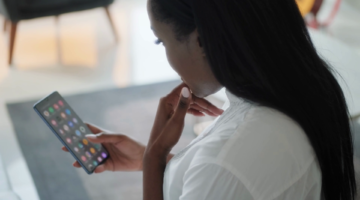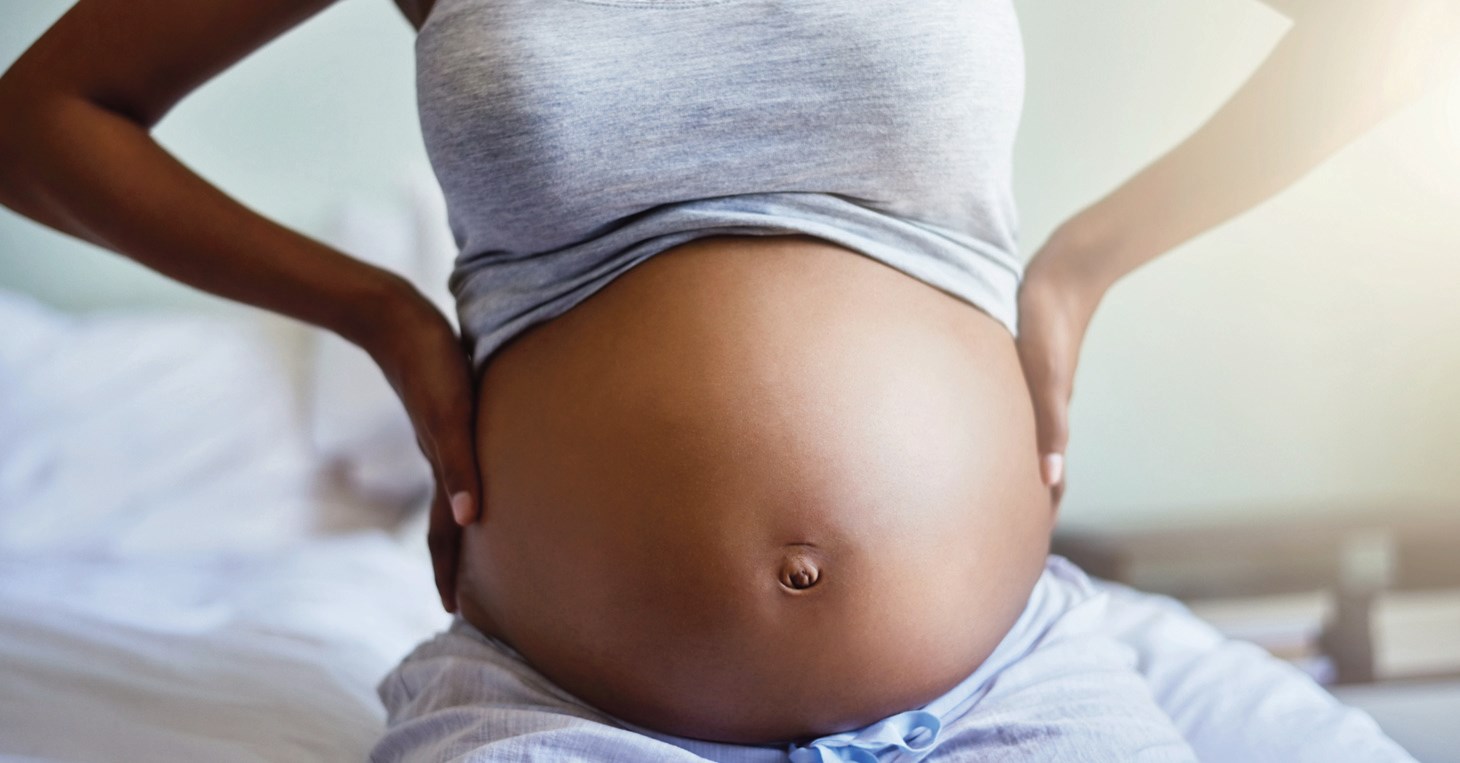BIRMINGHAM, Ala. (AP) – Angelica Lyons knew it was dangerous for Black women to give birth in America.
As a public health instructor, she taught college students about racial health disparities, including the fact that Black women in the U.S. are nearly three times more likely to die during pregnancy or delivery than any other race. Her home state of Alabama has the thirdhighest maternal mortality rate in the nation.
Then, in 2019, it nearly happened to her. What should have been a joyous first pregnancy quickly turned into a nightmare when she began to suffer debilitating stomach pain.
Her pleas for help were shrugged off, she said, and she was repeatedly sent home from the hospital. Doctors and nurses told her she was suffering from normal contractions, she said, even as her abdominal pain worsened and she began to vomit bile. Angelica said she wasn’t taken seriously until a searing pain rocketed throughout her body and her baby’s heart rate plummeted.
Rushed into the operating room for an emergency cesarean section, months before her due date, she nearly died of an undiagnosed case of sepsis.
Even more disheartening: Angelica worked at the University of Alabama at Birmingham, the university affiliated with the hospital that treated her.
Her experience is a reflection of the medical racism, bias and inattentive care that Black Americans endure. Black women have the highest maternal mortality rate in the United States – 69.9 per 100,000 live births for 2021, almost three times the rate for white women, according to the Centers for Disease Control and Prevention.
Black babies are more likely to die, and also far more likely to be born prematurely, setting the stage for health issues that could follow them through their lives.
"Race plays a huge part, especially in the South, in terms of how you’re treated, " Angelica said, and the effects are catastrophic. "People are dying."
To be Black anywhere in America is to experience higher rates of chronic ailments like asthma, diabetes, high blood pressure, Alzheimer’s and, most recently, COVID-19. Black Americans have less access to adequate medical care; their life expectancy is shorter. From birth to death, regardless of wealth or social standing, they are far more likely to get sick and die from common ailments.
Black Americans’ health issues have long been ascribed to genetics or behavior, when in actuality, an array of circumstances linked to racism – among them, restrictions on where people could live and historical lack of access to care – play major roles.
Discrimination and bias in hospital settings have been disastrous.
The nation’s health disparities have had a tragic impact: Over the past two decades, the higher mortality rate among Black Americans resulted in 1.6 million excess deaths compared to white Americans. That higher mortality rate resulted in a cumulative loss of more than 80 million years of life due to people dying young and billions of dollars in health care and lost opportunity.
BEFORE FIRST BREATH Angelica Lyons’ pregnancy troubles began during her first trimester, with nausea and severe acid reflux. She was prescribed medication that helped alleviate her symptoms but it also caused severe constipation.
In the last week of October 2019, while she was giving her students a test, her stomach started to hurt badly.
"I remember talking to a couple of my students and they said, ‘You don’t look good, Ms. Lyons,”’ Angelica recalled.
She called the University of AlabamaBirmingham Hospital’s labor and delivery unit to tell them she was having a hard time using the bathroom and her stomach was hurting. A woman who answered the phone told her it was a common pregnancy issue, Angelica said, and that she shouldn’t worry too much.
"She made me feel like my concern wasn’t important, and because this was my first pregnancy, I decided not to go because I wasn’t sure and thought maybe I was overreacting," Angelica said.
The pain persisted. She went to the hospital a few days later and was admitted.
She had an enema – a procedure where fluids are used to cleanse or stimulate the emptying of bowels – to alleviate her constipation, but Angelica continued to plead with them that she was in pain.
"They were like, ‘Oh, it’s nothing, it’s just the Braxton Hicks contractions,”’ she said. "They just ignored me."
She was sent home but her stomach continued to ache, so she went back to the hospital a day later. Several tests, including MRIs, couldn’t find the source of the issue.
Angelica was eventually moved to the labor and delivery floor of the hospital so they could monitor her son’s heartbeat, which had dropped slightly. There, they performed another enema that finally helped with the pain. She also was diagnosed with preeclampsia, a dangerous condition that can cause severe pregnancy complications or death.
Then she began to vomit what appeared to be bile.
"I got worse and worse with the pain and I kept telling them, ‘Hey, I’m in pain, ‘" Angelica said. "They’d say, ‘Oh, you want some Tylenol?’ But it wasn’t helping."
She struggled to eat dinner that night. When she stood up to go to the bathroom, she felt a sharp pain ricochet throughout her body.
"I started hollering because I had no idea what was going on,” she said. ”I told my sister I was in so much pain and to please call the nurse."
What happened next remains a blur.
Angelica recalls the chaos of hospital staff rushing her to labor and delivery, putting up a blue sheet to prepare her for an emergency C-section as her family and ex-husband tried to understand what went wrong.
She later learned that she nearly died.
"I was on life support," recalled Angelica, 34. "I coded."
She woke up three days later, unable to talk because of a ventilator in her mouth. She remembers gesturing wildly to her mother, asking where her son, Malik, was.
He was OK. But Angelica felt so much had been taken from her. She never got to experience those first moments of joy of having her newborn placed on her chest. She didn’t even know what her son looked like.
MATERNAL SEPSIS
Maternal sepsis is a leading cause of maternal mortality in America. Black women are twice as likely to develop severe maternal sepsis, as compared to their white counterparts. Common symptoms can include fever or pain in the area of infection. Sepsis can develop quickly, so a timely response is crucial.
Sepsis in its early stages can mirror common pregnancy symptoms, so it can be hard to diagnose. Due to a lack of training, some medical providers don’t know what to look for. But slow or missed diagnoses are also the result of bias, structural racism in medicine and inattentive care that leads to patients, particularly Black women, not being heard.
"The way structural racism can play out in this particular disease is not being taken seriously," said Dr. Laura Riley, chief of obstetrics and gynecology at Weill Cornell Medicine and New YorkPresbyterian Hospital. "We know that delay in diagnosis is what leads to these really bad outcomes."
In the days and weeks that followed, Angelica demanded explanations from the medical staff of what happened. But she felt the answers she received on how it occurred were sparse and confusing.
A spokesperson for the University of Alabama at Birmingham said in a statement to The Associated Press that they couldn’t talk about Angelica’s case because of patient privacy laws. They pointed to a recent internal survey done by its Obstetrics and Gynecology department that showed that most of its patients are satisfied with their care and "are largely feeling respected," and said
the university and hospital "maintain intentional, proactive efforts in addressing health disparities and maternal mortality."
Angelica’s son, Malik, was born eight weeks early, weighing under 5 pounds. He spent a month in intensive care. He received home visits through the first year of life to monitor his growth.
While he’s now a curious and viva cious 3-year-old who loves to explore the world around him, Angelica recalls those days in the ICU, and she feels guilty because she could not be with him.
"It’s scary to know I could have died, that we could have died," Lyons said, wiping away tears.
STARK DISPARITIES
For decades, frustrated birth advocates and medical professionals have tried to sound an alarm about the ways medicine has failed Black women. Historians trace that maltreatment to racist medical practices that Black people endured amid and after slavery.
To fully understand maternal mortality and infant mortality crises for Black women and babies, the nation must first reckon with the dark history of how gynecology began, said Deirdre Cooper Owens, a historian and author.
"The history of this particular medical branch … it begins on a slave farm in Alabama," Owens said. "The advancement of obstetrics and gynecology had such an intimate relationship with slavery, and was literally built on the wounds of Black women."
Reproductive surgeries that were experimental at the time, like cesarean sections, were commonly performed on enslaved Black women.
Physicians like the once-heralded J. Marion Sims, an Alabama doctor many call the "father of gynecology," performed torturous surgical experiments on enslaved Black women in the 1840s without anesthesia.
And well after the abolition of slavery, hospitals performed unnecessary hysterectomies on Black women, and eugenics programs sterilized them.
Health care segregation also played a major role in the racial health gap still experienced today.
Until Congress passed the Civil Rights Act of 1964, Black families were mostly barred from well-funded white hospitals and often received limited, poor or inhumane medical treatment. Black-led clinics and doctors worked to fill in the gaps, but even after the new protections, hospitals once reserved for Black families remained under-resourced, and Black women didn’t get the same support regularly available for white women.
That history of abuse and neglect led to deep-rooted distrust of health care institutions among communities of color.
"We have to recognize that it’s not about just some racist people or a few bad actors," said Rana A. Hogarth, an associate professor of History at the University of Illinois, Urbana-Champaign. "People need to stop thinking about things like slavery and racism as just these features that happened that are part of the contours of history and maybe think of them more as foundational and institutions that have been with us every step of the way."
Some health care providers still hold false beliefs about biological differences between Black and white people, such as Black people having "less sensitive nerve endings, thicker skin, and stronger bones." Those beliefs have caused medical providers today to rate Black patients’ pain lower, and recommend less relief.
The differences exist regardless of education or income level. Black women who have a college education or higher have a pregnancy-related mortality rate that is more than five times higher than that of white women. Notably, the pregnancyrelated mortality rate for Black women with a college education is 1.6. times higher than that of white women with less than a high school degree.
In Angelica Lyons’ home state of Alabama, about 40 mothers die within one year after delivery. The toll on Black mothers is disproportionate.
The state’s infant mortality rate for 2021 was 7.6 deaths per 1,000 live births. The disparities between Black and white babies is stark: The infant mortality rate in 2021 for white mothers was 5.8, while the infant mortality rate for Black mothers was 12.1, an increase from 10.9 from the prior year.
Black babies account for just 29% of births in Alabama, yet nearly 47% of infant deaths.












No Comment